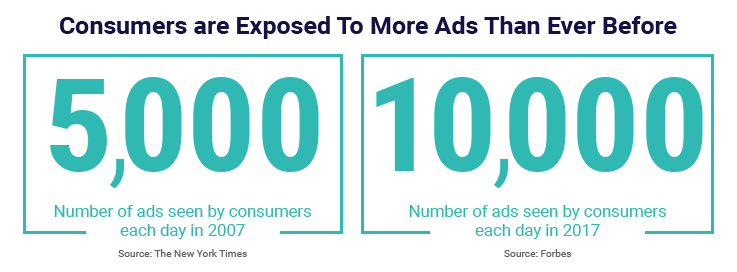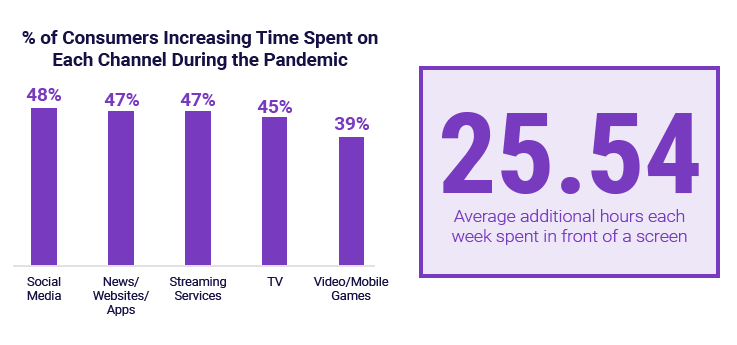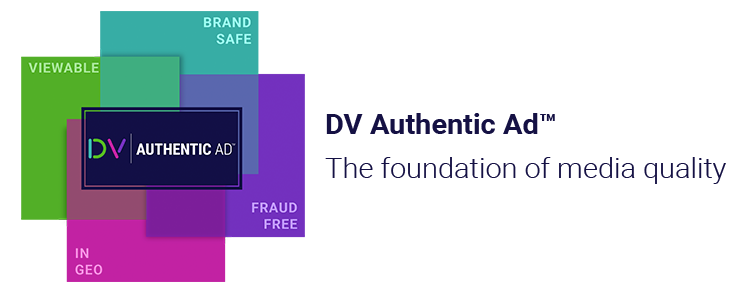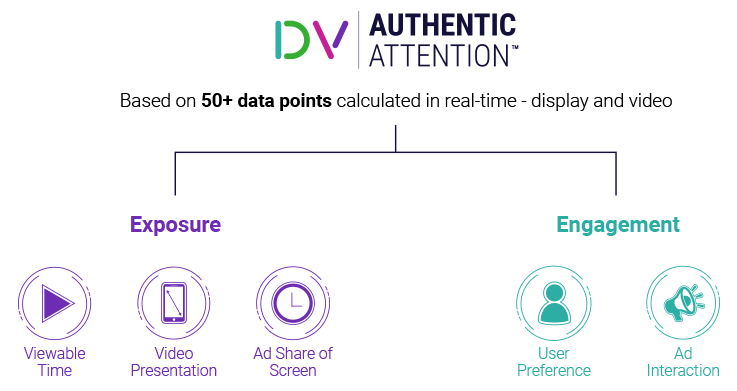In part one of our new attention series, Gian LaVecchia, DV’s SVP of Brand & Advertiser Sales, breaks down the challenges of connecting with consumers across a cluttered landscape and explains how privacy-friendly attention metrics are helping advertisers stand out from the crowd.
What good is an ad if a user doesn’t see it? This became a question in 2007 when researchers at the Interactive Advertising Bureau (IAB), the Association of National Advertisers (ANA) and the American Association of Advertising Agencies (4A’s) first introduced the concept of viewability. To be viewable, per the IAB standard, a display ad must have 50% of pixels visible in a user’s browser for one second, and a video ad must have 50% of pixels visible for two seconds. Put another way, viewability confirms that an ad has the potential to be seen, but it cannot measure impact.
The Fight for Consumer Attention in a Crowded Landscape
Today, qualifying impact matters more than ever before. The media and advertising landscapes have changed drastically since 2007. Fourteen years ago, The New York Times reported that consumers saw 5,000 ads a day. By 2017, Forbes estimated this number could be as high as 10,000.

Now, in the wake of the pandemic, content consumption, and the advertising that accompanies it, is exploding. DV/Sapio consumer research shows that screen time has doubled since the start of the Covid-19 pandemic. This translates to an additional 25.54 hours of content consumption each week per person, on average.

And in today’s new era of content consumption, audiences have never had more ability to control their media experience. Whether they are watching short-form TikToks or long-form feature films, consumers are now firmly entrenched in the idea that relevancy is a fundamental part of the media experience. As a result, marketers are finding it increasingly difficult to effectively reach and connect with audiences in a reality where attention has emerged as a vital yet increasingly scarce natural resource.
It is no longer enough for advertisers to be assured that their ad had the chance to be seen. Advertisers need to know that their ad is making an impact.
Measuring Impact With Privacy-Friendly Attention Metrics
Advertising needs to evolve toward a more ambitious, privacy-friendly measurement construct — one that recognizes the nuances of today’s media environment and gives advertisers insight into how their messaging is resonating with their audience. Attention-based metrics have emerged to help marketers better understand the overall relevance and resonance of an ad experience — and how that experience translates to driving high-value business outcomes.

Balancing Privacy and Insight
Privacy concerns are paramount, and the privacy space has gone through a massive evolution over the last several years. Until recently, marketers actively leveraged third-party data sets to help drive more precision and impact in their targeting and measurement efforts.
Today, the landscape continues to evolve in the post-GDPR/CCPA regulatory environment and the industry finds itself facing the next big shift in privacy, as cookie deprecation and the long term impact of IDFA changes continues to loom. Recent statistics from Flurry, for example, show that only 15% of active mobile app users in the U.S. have opted into app tracking following the release of iOS 14.5.

Unsurprisingly, this new reality has created challenges for marketers. And it begs the question: how can marketers best navigate this new environment and still extract the full potential from their marketing investments? Privacy-friendly attention metrics can give advertisers performance insight at the impression level, instead of the user level.
How DV Authentic Attention® Works
DV is constantly evaluating real-world market signals to help understand what will be the driver of the next disruptive trend, and we anticipated the shift away from cookie-based solutions many years ago. That’s why we developed DV Authentic Attention®, the first privacy-friendly data solution in the market to provide timely, impression-level insights to optimize campaign performance — from the impact of an ad’s presentation to key dimensions of consumer engagement.
The solution is built off of the DV Authentic Ad™ — the singular and definitive measure of media quality, that is MRC accredited and ensures each and every impression meets the criteria of being brand-safe, fraud free, viewable and delivered in the intended geography.

Once an advertiser has established a foundation of media quality, DV overlays privacy-friendly attention signals to help provide broader texture and insight into the core drivers of media performance. DV Authentic Attention® evaluates more than 50 data signals across two different attention-based data cohorts: exposure and engagement.
- Exposure measures the prominence and intensity of the ad experience.
- Engagement: measures both user presence and the depth of user engagement within the ad experience.

From there, these two data sets power the DV Attention Index™, which helps marketers surface key performance signals, at an exceptionally granular level, to help fuel actionable insights (in near real-time) that can transform campaign performance.
Mondelez International, for example, used DV Authentic Attention™ to evaluate and optimize the performance of a cross-platform display campaign for a popular snack brand. Mondelez found that high-exposure impressions on the campaign correlated with a nine percentage point increase in favorability, an eight point lift in consideration overall and a five point rise in purchase intent among the brand’s primary targeting audience.

Realizing the Full Potential of a Truly Addressable Landscape
One of the foundational tenets of digital marketing has long been its ability to offer both targeting and measurement precision to drive stronger marketing performance. As we quickly accelerate towards a marketing ecosystem that is no longer reliant on cookie-based solutions, attention signals are helping fill the visibility gap created by this market shift.
Attention signals surface new insights that can help transform campaign performance. And for those marketers who have already built out robust first-party Customer Data Platforms (CDPs), impression-level attention signals can help further augment and enhance the depth of those audience segments.
In our next installment, DV’s Sanjana Palepu and Collette Spagnolo will take a deep-dive into how advertisers can use attention metrics to optimize at the creative and inventory levels. Until then, if you have any questions, reach out to Sales@DoubleVerify.com.

